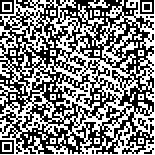|
|
| |
|
|
| 本文已被:浏览 5607次 下载 6601次 |

码上扫一扫! |
|
|
| 天津近岸人工鱼礁海域浮游植物群落及其变化特征 |
|
张雪1,2, 徐晓甫1,2, 戴媛媛1, 王宏1,2, 房恩军1,2, 侯纯强1,2, 高燕1,2, 郭彪1,2, 陈卫1,2
|
|
1.天津渤海水产研究所 天津 300457;2.天津市海洋牧场技术工程中心 天津 300457
|
|
| 摘要: |
| 2016年5月、7月和11月分别对天津近岸海域2010年、2012年和2014年投放的人工鱼礁区及非人工鱼礁区(对照区)进行3个航次的调查,每个区域设置3个站位,共计12个站位。结果显示,共鉴定浮游植物2门28属58种,其中,硅藻门19属44种,甲藻门9属14种。物种以硅藻为主,占总物种的75.9%,其次为甲藻,占总物种的24.1%。浮游植物优势种以硅藻门的圆筛藻属和角毛藻属为主,主要有威氏圆筛藻(Coscinodiscus wailesii)、星脐圆筛藻(C. asteromphalus)、格氏圆筛藻(C. granii)、虹彩圆筛藻(C. oculusiridis)、圆筛藻(Coscinodiscus spp.)、卡氏角毛藻(Chaetoceros castracanei)、劳氏角毛藻(Ch. lorenzianus)、旋链角毛藻(Ch. curvisetus)、尖刺伪菱形藻(Pseudo-nitzschia pungens)、柔弱几内亚藻(Guianardia delicatula)、刚毛根管藻(Rhizosolenia setigera)、翼鼻状藻印度变型(Proboscia alata f. indica)和夜光藻(Noctilluca scintillans)。浮游植物细胞丰度存在明显的季节差异,11月、7月和5月浮游植物细胞丰度分别为94.79×104、39.53×104和21.5×104 cell/m³,浮游植物多样性指数也有明显的季节差异,11月香农–威纳多样性指数、丰富度指数和均匀度指数均比5月和7月高。从人工鱼礁区与对照区对比来看,5月浮游植物细胞丰度礁区外显著高于鱼礁区,7月和11月2014年鱼礁区浮游植物细胞丰度显著高于其他鱼礁区和礁区外。浮游植物多样性指数,礁区外和2012年鱼礁区低于2010年和2014年鱼礁区,礁区外最低。研究表明,人工鱼礁的构建对于提高浮游植物群落多样性具有显著效果,但随着时间的延长,浮游植物群落多样性不是一直增高,有一定程度的波动。 |
| 关键词: 浮游植物 人工鱼礁 群落结构 |
| DOI: |
| 分类号: |
| 基金项目: |
|
| Phytoplankton Community Characteristics and Variation at Artificial Reefs of Tianjin Offshore |
|
ZHANG Xue1,2, XU Xiaofu1,2, DAI Yuanyuan1, WANG Hong1,2, FANG Enjun1,2, HOU Chunqiang1,2, GAO Yan1,2, GUO Biao1,2, CHEN Wei1,2
|
|
1.Tianjin Bohai Sea Fisheries Research Institute, Tianjin 300457;2.Tianjin Marine Ranching Technical Engineering Center, Tianjin 300457
|
| Abstract: |
| Three cruises were conducted in May, July, and November 2016 in artificial reef areas constructed in 2010, 2012, and 2014, respectively, and the non-artificial reef area (control area) offshore of Tianjin with three sampling stations for each, totaling 12 sites. The results identified 58 taxa of phytoplankton belonging to 2 phyla and 28 genera. Among these species, Bacillariophyta includes 19 genera and 44 species, and Pyrrophyta includes 9 genera and 14 species. Diatom species are dominant, accounting for 75.9% of all species, followed by dinoflagellates, accounting for 24.1%. Dominant phytoplankton species are Coscinodiscus and Chaetoceros of Bacillariophyta, mainly Coscinodiscus wailesii, C. asteromphalus, C. granii, C. oculus-iridis, C. spp., Chaetoceros castracanei, Ch. lorenzianus, Ch. curvisetus, Pseudo-nitzschiapungens, Guianardia delicatula, Rhizosolenia setigera, Proboscia alata f. indica, and Noctilluca scintillans. Phytoplankton cell abundance showed obvious seasonal changes, with the average cell abundance in November, July, and May at 94.79×104 cell/m³, 39.53×104 cell/m³, and 21.5×104 cell/m³, respectively. Phytoplankton diversity index also had obvious seasonal variation. In November, the Shannon-Wiener diversity index, Margalef index, and Pielou index were higher than in May and July. Comparing the artificial reef areas with the control area, the phytoplankton cell abundance of the control in May was significantly higher than the artificial reef areas. In July and November, phytoplankton cell abundance at the artificial reef constructed in 2014 was significantly higher than other artificial reef areas and the control area. The diversity index in both the control and the artificial reef area constructed in 2012 was lower than the 2010 and 2014 reefs, and lowest in the non-artificial reef area. Clearly, the construction of an artificial reef had a significant effect in improving phytoplankton community diversity, but this diversity is not always increasing consistently but fluctuating. |
| Key words: Phytoplankton Artificial reef Community structure |
|
|
|
|